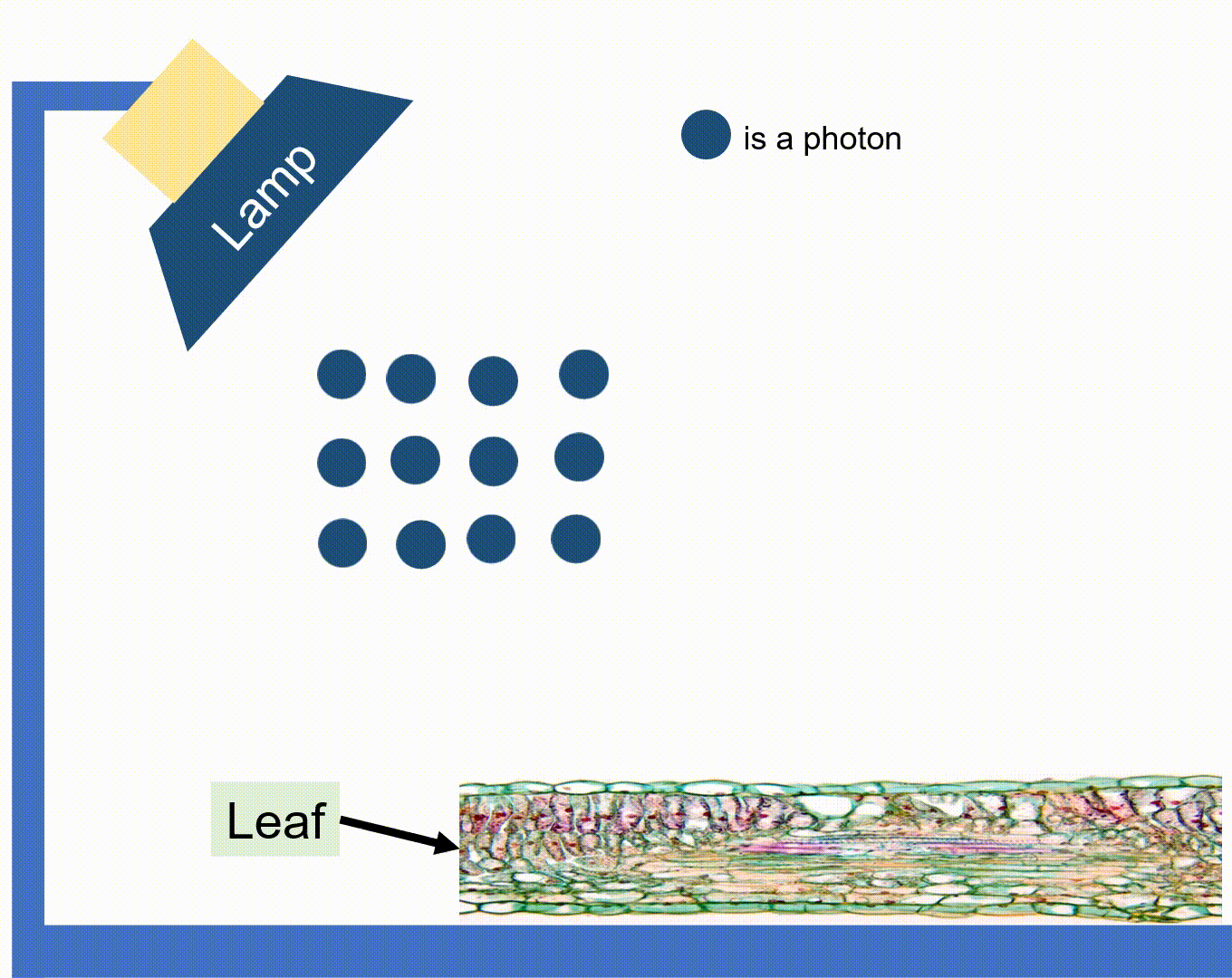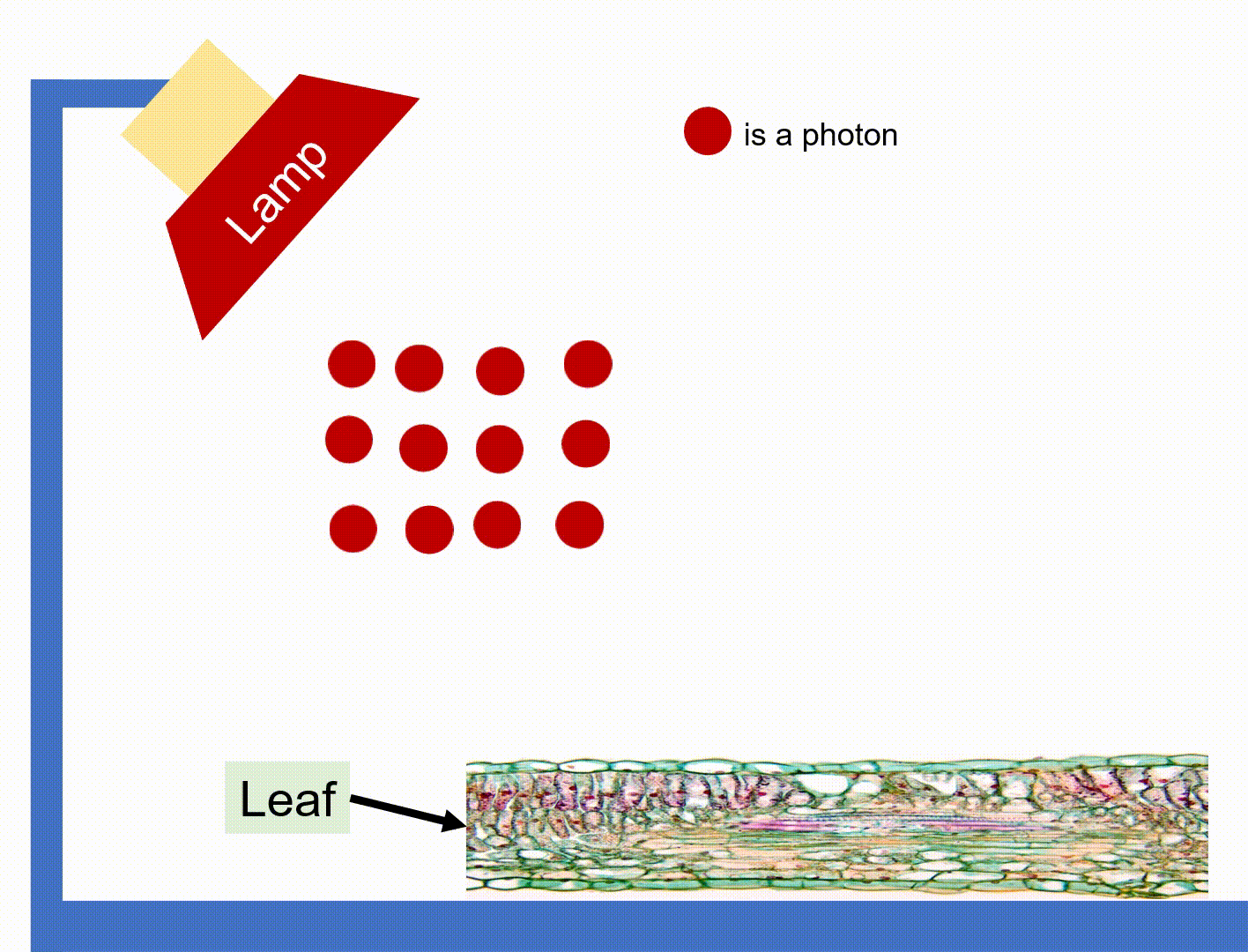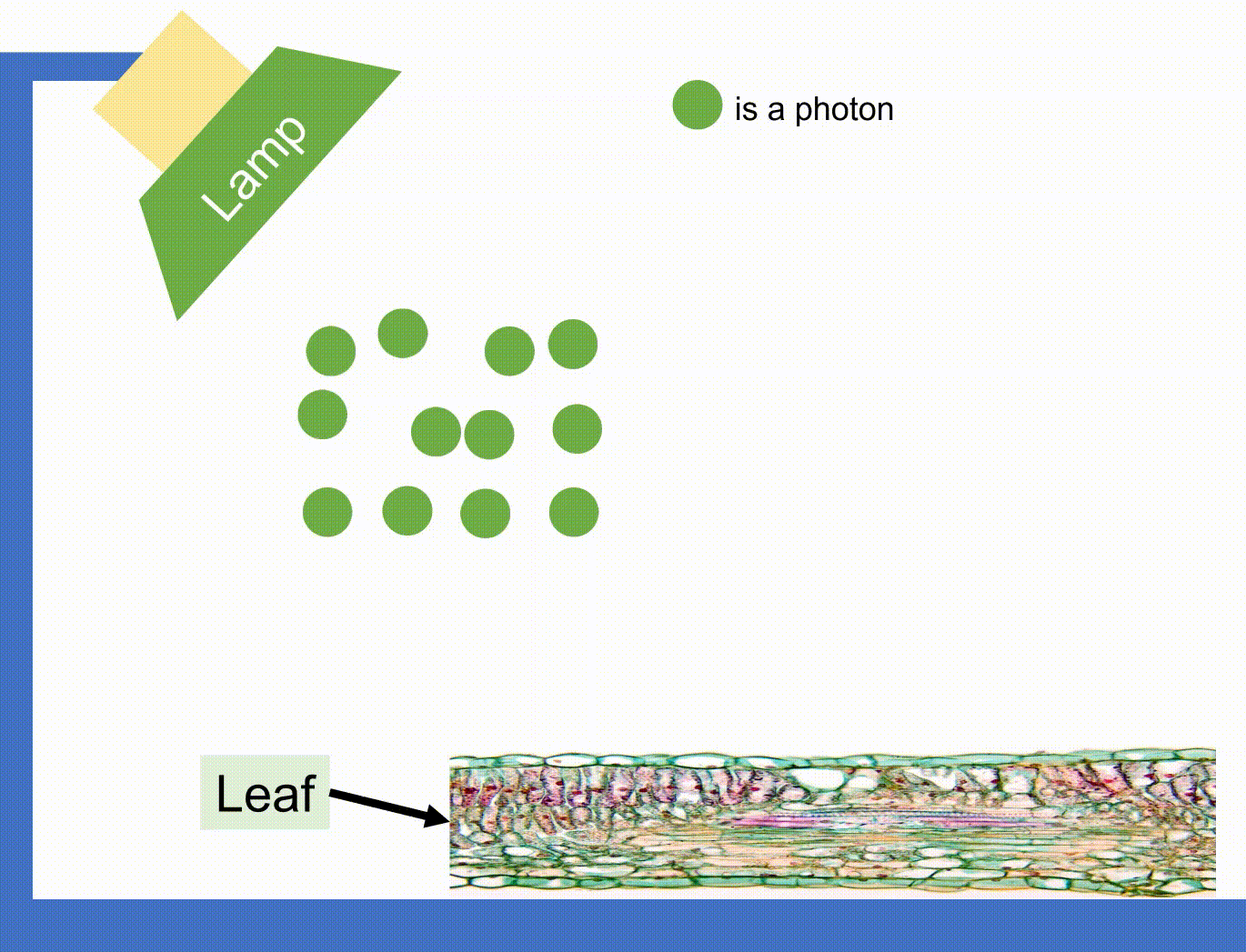Lumination Incorporation
Increase Carbohydrate Content
Defining Nutritional Value
The nutritional value of fruits and vegetables depends on their vitamins, minerals, and energy content. Plants store energy in a type of biomolecule called carbohydrates, which include glucose, sucrose, and starch. The rate of the Calvin Cycle, a reaction plants undergo that produce carbohydrates, is determined by the enzymatic activity of Ribulose Bisphosphate Carboxylase-Oxygenase (RuBisCo). In the Calvin Cycle, RuBisCo is used to form one molecule of G3P (Glycerol-3-Phosphate) , a 3-carbon product, from three molecules of carbon dioxide. 2 G3P is later used to form glucose, which is further converted to starch to be stored as energy. A diagram showing the full reaction of the Calvin Cycle is shown on the right.

Image 1: The full Calvin Cycle, showing how RuBisCo fixes carbon dioxide into G3P and then Glucose.
Effects of Light on the Calvin Cycle
The wavelength of light affects the rates of RuBisCo carboxylation, which fixes CO2 into a stable organic intermediate in plant leaves, which directly impacts the amount of G3P produced in the leaf. In addition, the G3P is actually converted into fructose, the primary sugar found in fruits. Hence, the amount of nutrients in fruits is also linked to the rate of photosynthesis in the leaves, which makes the optimisation of RuBisCo carboxylation even more important for plant growth.
The rate of RuBisCo carboxylation to facilitate photosynthesis is generally proportional to the wavelength of visible light used, meaning that longer wavelengths would be more ideal for photosynthesis. The exception to this rule would be light of greenish wavelengths as the colour of the chlorophyll molecule is green, thus absorption rates would be lower. The relation between wavelength and the percentage of photons absorbed at each wavelength is shown in the graph on the right.

Image 2: A graph comparing relative quantum yield (percentage of photons absorbed) to the wavelength of light used. As seen, higher wavelengths generally have higher rates of absorption, with the exception for the greenish wavelengths as they are reflected by the chlorophyll molecule.
By increasing the wavelength of the light, we would increase the rate of electron transport, which would increase the rate of generation of ATP and NADPH, resulting in an increase in the rate of RuBisCo carboxylation, hence increasing the amount of G3P produced. The process of RuBisCo carboxylation is shown below, where RuBisCo is converted to Ribulose Bisphosphate carboxylase.

Image 3: A RuBisCo molecule undergoing carboxylation and oxygenation. We will focus on the carboxylation process pictured above.
At low photosynthetic photon flux density (PPFD) which refers to the number of photons that strike a given surface area of 1 m^2 (measured in μmol m s ) photosynthetic efficiency is decreased due to the low absorptance of green light . However, at high PPFD, a more uniform distribution of green light in leaves resulted in high RuBisCo carboxylation rates. As G3P is the only way for plants to synthesise glucose from light energy the wavelength of light is directly tied to the amount of energy content in vegetables, especially leafy vegetables which are the sites for photosynthesis.
In conclusion, red light is most suitable to be used at low PPFD, while green light is most suitable at high PPFD. While the chlorophyll molecule absorbs green light less efficiently, green light is able to penetrate deeper into the leaf to excite the chlorophyll molecules that are not found close to the leaf surface. Blue light is despite being absorbed more by the plant than green light contrary to popular belief. The comparison between the three wavelengths of light is displayed in the three following animations.
-2
-1



©Lumination Incorporation 2023
©Lumination Incorporation 2023
©Lumination Incorporation 2023
Animation 1: Green Light photons hitting a leaf. Most of the green photons are not absorbed by the leaf, but those that are absorbed penetrate deep into the leaf, hence are able to excite the chlorophyll molecules found deeper into the leaf.
Animation 2: Red Light photons hitting a leaf. Most of the red photons are absorbed by the leaf but they accumulate at the surface of the leaf and are unable to penetrate deep into the leaf, which means that they are only able to excite the chlorophyll molecules found at the surface of the leaf.
Animation 3: Blue Light photons hitting a leaf. Slightly fewer blue photons are absorbed by the leaf but those that are absorbed similarly accumulate at the surface of the lead, unable to penetrate deep into the leaf, thus they are also only able to excite the chlorophyll molecules found at the surface of the leaf.
Impact and Applications
The wavelength of light affects the rate of photosynthesis in plants, which in turn affects the amount of glucose produced by the plant. Green light is best for photosynthesis at high light intensity, while red light is best for photosynthesis at low light intensity. By using a combination mainly comprising of green and red light, the rate of photosynthesis can be optimised throughout the whole plant. This method can be applied to indoor farming systems, increasing food production and making Singapore more self-sustainable. The food produced is also more nutritious, further reducing the amount of imported food required to fulfil Singapore's nutritional needs.
Image References
-
https://www.khanacademy.org/science/ap-biology/cellular-energetics/photosynthesis/a/calvin-cycle (Image 1)
-
https://www.frontiersin.org/articles/10.3389/fpls.2021.619987/full (Image 2)
-
Animation 1, 2 and 3 were all created by ourselves.